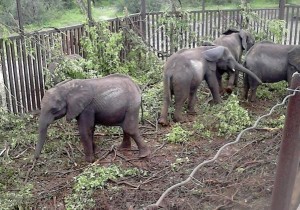Written By: Grace Brosofsky
Zoos, aquariums, and similar facilities often seem two-faced, presenting a confusing story to those who enjoy watching animals. They take a stance as pioneers of preserving species and inspiring wildlife lovers, while they have difficulty meeting sustainability and animal welfare standards as captivity operations that can turn animals into unwitting spectacles. The worse side of these operations emerged into the public eye with the revelations of former SeaWorld trainers in Blackfish. With my former love for SeaWorld shaken, I, like other animal and nature lovers, find myself wondering
“What questions do we need to ask before accepting animal confinement facilities as sustainable places we can enjoy without a guilty conscience?”
In this article I explore just a few of those questions.
What are the animals’ back stories?
When zoos and aquariums struggle with maintaining sustainable populations, they often “source” their animals through live capture. The origin stories of animals can serve as a tell-tale sign of whether a captivity operation serves animal or human interests. Did the facility worsen the lives

In this image of captured calves in Zimbabwe, elephant expert Poole notes that “the calf to the left has a pinched, sunken face, with the cheek bone prominent and sunken temporal lobe and jaw line. The calf to the right, with the flop ear, moving away and looking back, is alarmed by the presence of people.”
of “healthy and happy” animals from the wild or does it house animals that would otherwise have difficulty surviving? We see an example of the former in Zimbabwe’s capture of baby elephants between the ages of two-and-a-half and five reportedly for zoos. Dividing babies and mothers seems instinctively wrong, but an understanding of the bond between elephants and their children transforms simply “wrong” to “cruel.” Emotions aside, elephants physically depend on their mothers through their first several years.
While heralded as a cornerstone of conservation, captive breeding programs also have their downsides. While these programs can take claim for preserving certain species, controversy surrounds issues such as whether breeding expenditures would serve a better purpose directed towards habitat preservation and if the genetic impact of captive breeding precludes successful reintegration of captive-bred animals with their wild counterparts. Each captive breeding program is not equal, so we have the responsibility to evaluate the sustainability and humanity of a given program. SeaWorld’s disturbing breeding practices came to public attention with Blackfish, and some zoos kill “surplus” animals not fitting their breeding protocols or sell them to dubious new owners such as circuses or hunting ranches.
Are the animals’ needs met?
Sounds basic, but needs include psychological needs. Think about it: would you really say you were living if you had adequate food and medical care but could never do anything (except of course pace back and forth)? Animals exhibit stress from boredom in many ways, including developing abnormal repetitive behaviors known as stereotypies. While captivity cannot give animals the same experiences they would have in the wild, the best facilities focus on finding innovative ways to entertain the animals (not tourists) by stimulating natural behaviors rather than forcing unnatural behaviors using pain.
Are the animals’ needs met sustainably?
It takes more resources to provide for confined animals than it takes for the same species to provide for themselves outside of confinement. Zoos and aquariums must invest resources into maintaining simulations of habitats that would naturally maintain themselves in the wild, and the concentration of animals creates waste management issues. Seek facilities that try to avert these issues by implementing measures such as organic waste composting.
By asking these questions about animal confinement operations before choosing to visit or otherwise support them, you can make a difference. Like all businesses, zoos and aquariums respond to consumer demand. Atrocities such as the Zimbabwe elephant capture happen as a supply-side chain reaction to our demand for captive cute critters, so by shifting our demand we can lessen the cause of such atrocities. Stay tuned to see where different facilities fall on the spectrum of sustainability and animal welfare so you can focus your support on the organizations making positive impact.
